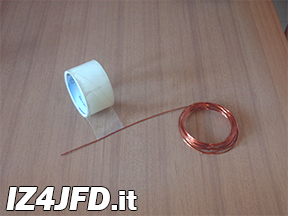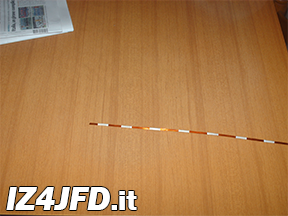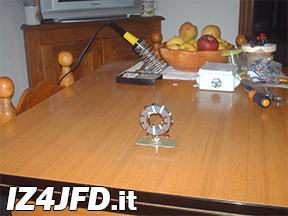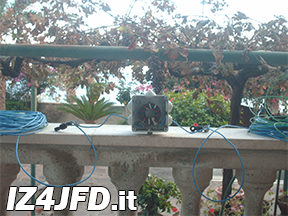Pietro, HF 1:1 balun
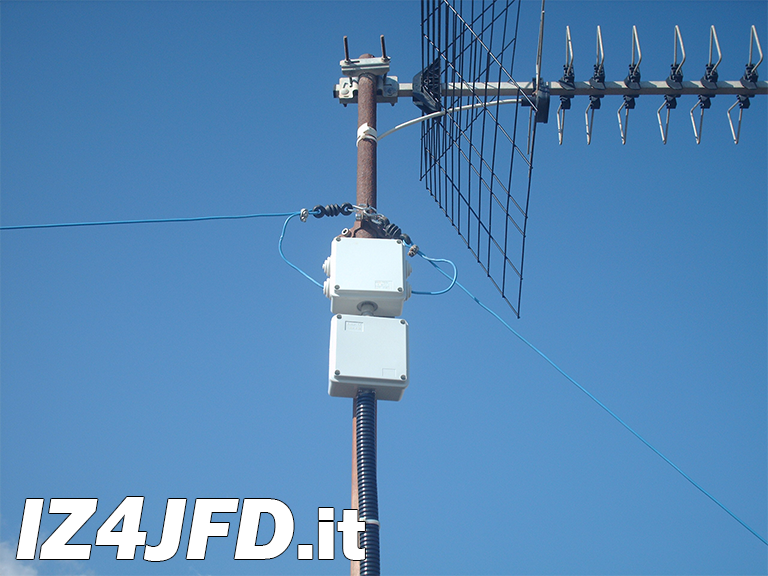
Pietro is the 1:1 balun I built to use it with Turi, the 80m half-wave dipole that I had. It is a "current" balun, based on the scheme developed and published by G. Guanella in 1944, characterized by a bandwidth that includes the whole HF range, where Pietro’s Zin/Zout ratio is 1:1. The components necessary for the making of this balun are in Amidon‘s AB240-125 kit, which makes it possible to realize a magnificent balancer with excellent characteristics, among which are efficiency, bandwidth and maximum RF power.
Schematic diagram
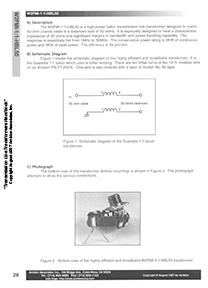
As already mentioned, Pietro is a current balun whose electrical scheme derives from the one developed by G. Guanella. It features a two-wire transmission line wound on a ferrite toroidal core: the two conductors of the line have a cross section and a reciprocal position that give the line a 50 Ohm impedance; at the same time, the ferrite core has adequate permeability so that the balun maintains its characteristics unchanged in the lower part of the HF with a "reasonable" number of turns (thus optimizing its behavior at higher frequencies, too). In matching conditions (i.e., with the balun between an unbalanced 50 Ohm transmission line, and a 50 Ohm balanced load), the RF current that crosses each conductor of the line is equal and opposite to the one that crosses the other conductor. Thus, the RF currents that cross the bifilar transmission line cancel each other out, without causing magnetic flux inside the ferrite core and allowing Pietro to perform his balancing (i.e., matching between an unbalanced line and a balanced load) and "choking" (i.e., to prevent RF feedback currents) functions.
Making of
The Amidon AB240-125 kit includes a FT240-61 ferrite toroidal core and about 4 meters of AWG14 Thermaleze copper wire. In addition to this, there is also a brochure which shows how to make a 1:1 and a 1:4 balun using the ferrite core and the copper wire included in the kit.
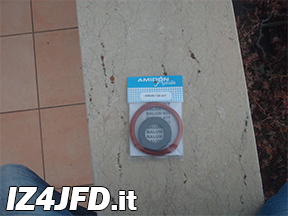
The 1:1 balun in the brochure is a project based on the Ruthroff scheme, which involves the use of a three-wire line for the windings. Knowing the advantages of the Guanella scheme over the Ruthroff one, I decided to use the former for the making of Pietro. Before proceeding, it was necessary to make a change to the material at my disposal. I cut two copper segments, each just over 55 cm long, out of the coil supplied in the kit. On one of these segments I applied a layer of adhesive tape, proceeding as shown in the pictures: 12 "applications" of tape were necessary to cover the entire wire, then I prepared the two-wire transmission line, arranging both conductors so that they are parallel and adherent to each other along the entire length.
The purpose of the adhesive tape layer is to further separate the two conductors of the two-wire line, so that it assumes a 50 Ohm characteristic impedance (without adhesive tape applied to one of the conductors, the line would have a 40 Ohm impedance, approximately).
In the book from where Pietro's scheme appears ("Transmission Line Transformers Handbook"), author Jerry Sevick recommends the use of a Scotch model 92 adhesive tape: not having it available, nor having managed to find it anywhere, I used a transparent adhesive tape produced by Syrom, 5 cm wide, but I do not know its model, nor any other characteristics. I wound 10 turns of bifilar line on the toroidal core, distributing them over the entire circumference of the toroid: finally, I placed the wound core inside a watertight plastic box, inside which I soldered it to the SO239 input connector of the balun and to the dipole’s wires.
Performance
As for each balun and unun that I have built so far, the verification of Pietro’s correct functioning took place by applying a 50 Ohm resistive load to his output terminals. I used a 50 Ohm/5 Watts resistor, which confirmed Pietro's perfect behavior along the entire HF range, during the transmission tests carried out with my Kenwood TS140-S: an (almost) null SWR and a constant Zin/Zout ratio from 1 to 30 Mhz. After I soldered the balun to Turi’s wires and once the dipole installation was completed, I found that the antenna continued to resonate excellently on 80 meters, showing that a balun can only improve the operation of each antenna for which its use is recommended.




